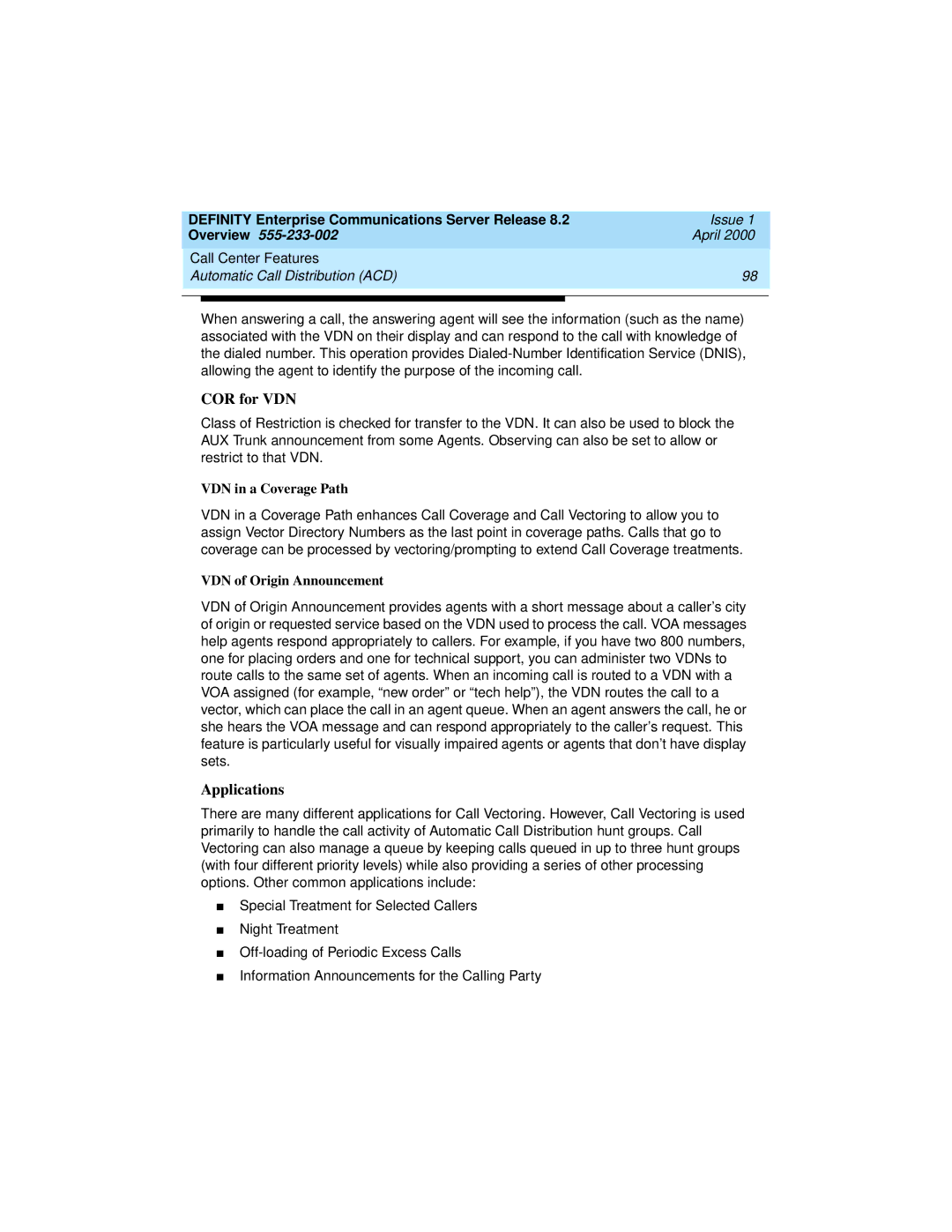DEFINITY Enterprise Communications Server Release 8.2 | Issue 1 | ||
Overview | April 2000 | ||
|
| ||
Call Center Features |
| ||
Automatic Call Distribution (ACD) | 98 | ||
|
|
|
|
|
|
|
|
When answering a call, the answering agent will see the information (such as the name) associated with the VDN on their display and can respond to the call with knowledge of the dialed number. This operation provides
COR for VDN
Class of Restriction is checked for transfer to the VDN. It can also be used to block the AUX Trunk announcement from some Agents. Observing can also be set to allow or restrict to that VDN.
VDN in a Coverage Path
VDN in a Coverage Path enhances Call Coverage and Call Vectoring to allow you to assign Vector Directory Numbers as the last point in coverage paths. Calls that go to coverage can be processed by vectoring/prompting to extend Call Coverage treatments.
VDN of Origin Announcement
VDN of Origin Announcement provides agents with a short message about a caller’s city of origin or requested service based on the VDN used to process the call. VOA messages help agents respond appropriately to callers. For example, if you have two 800 numbers, one for placing orders and one for technical support, you can administer two VDNs to route calls to the same set of agents. When an incoming call is routed to a VDN with a VOA assigned (for example, “new order” or “tech help”), the VDN routes the call to a vector, which can place the call in an agent queue. When an agent answers the call, he or she hears the VOA message and can respond appropriately to the caller’s request. This feature is particularly useful for visually impaired agents or agents that don’t have display sets.
Applications
There are many different applications for Call Vectoring. However, Call Vectoring is used primarily to handle the call activity of Automatic Call Distribution hunt groups. Call Vectoring can also manage a queue by keeping calls queued in up to three hunt groups (with four different priority levels) while also providing a series of other processing options. Other common applications include:
■Special Treatment for Selected Callers
■Night Treatment
■
■Information Announcements for the Calling Party
